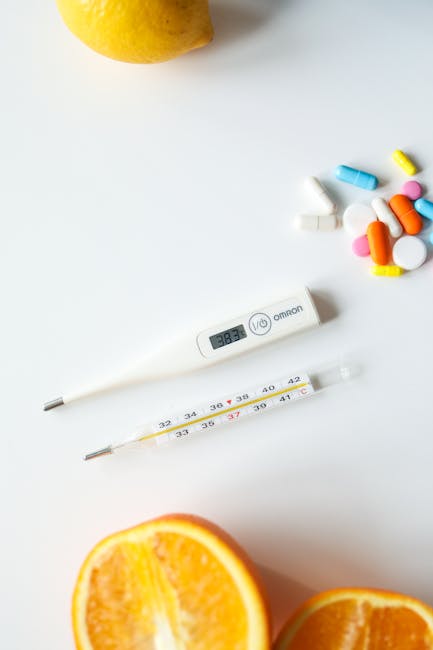Table of Contents
- Types of OTC Cold Medicines Explained
- Match Your Symptoms to the Right Ingredient
- Safe Dosage & Administration Basics
- Key Interactions & High-Risk Groups
- Brand vs Generic: When to Save
- Smart Storage & Proper Disposal
- Phenylephrine vs Pseudoephedrine: 2025 FDA Update
- Frequently Asked Questions
Introduction
Overview of Over-the-Counter Cold Medicine
Over the counter cold medicine is the frontline defender when congestion, coughing, and body aches crash your schedule. With shelves packed full of pills, syrups, and sprays, the real secret is matching symptoms to the right active ingredients—saving you cash, cutting side-effects, and getting you back on your feet faster than you can say “achoo!”
When the sniffles and sneezes hit, many people find solace in over-the-counter (OTC) cold medicine. These remedies are readily available at pharmacies and grocery stores, providing quick relief for various cold symptoms. From nasal congestion to that nagging cough, OTC cold medicines are designed to help you feel better without needing a prescription.
Generally, the market offers a range of options, including:
- Antihistamines
- Decongestants
- Cough suppressantsIn essence, these medications target specific symptoms, making them an important resource during cold and flu season.

Importance of Choosing the Right Cold Medicine
Selecting the appropriate cold medicine is crucial for effective symptom management. The wrong choice can lead to unnecessary side effects and may even exacerbate issues. For example, if you have diabetes, you’ll want to avoid certain medications high in sugar. Furthermore, understanding the distinctions between daytime vs nighttime cold medicine can help you maintain a productive day without sacrificing restful sleep.
Types of Over-the-Counter Cold Medicine
Antihistamines
Antihistamines are often a go-to for combating sneezing and runny noses caused by colds or allergies. These medications work by blocking histamine, a chemical your body releases during allergic reactions. Popular antihistamines include diphenhydramine (Benadryl) and loratadine (Claritin). Personal experience shows that taking an antihistamine before bed can help ease nighttime symptoms.
Decongestants
Decongestants, such as pseudoephedrine, are designed to relieve nasal congestion by shrinking swollen blood vessels in the nasal passages. They can work wonders when you’re feeling stuffy, but remember to consult your doctor if you have hypertension, as they can raise blood pressure.
Pain Relievers
Pain relievers like acetaminophen (Tylenol) and ibuprofen (Advil) are effective for alleviating headaches and body aches. They help you feel more comfortable during that challenging cold season.
Cough Suppressants
Cough suppressants, such as dextromethorphan, can provide relief from persistent coughs that disrupt sleep. It’s important to note that while they can help with annoying coughs, productive coughs that remove mucus aren’t typically encouraged to be suppressed.
Multi-Symptom Cold Medications
Multi-symptom cold medications combine various active ingredients to tackle multiple symptoms at once. These all-in-one solutions can include antihistamines, decongestants, and pain relievers, making them convenient for those feeling overwhelmed by cold symptoms. However, it’s vital to read labels closely to avoid unintentional overdoses.

Choosing the Right Cold Medicine for Your Symptoms
Identifying Symptoms
Before reaching for any cold medicine, it’s crucial to identify your symptoms. Are you experiencing a runny nose, cough, or body aches? Understanding what you’re dealing with will guide you toward the right OTC medication. For instance, if you have a stubborn cough and a sore throat, you might focus on cough suppressants while ignoring antihistamines primarily meant for allergy relief.
Understanding Active Ingredients
Once you’ve pinpointed your symptoms, it’s time to dive into the active ingredients. Every cold medicine contains specific agents designed to tackle particular issues. For example:
- Dextromethorphan: Cough suppressant
- Pseudoephedrine: DecongestantBeing familiar with these ingredients can help you make informed choices.
Considerations for Specific Conditions
Special considerations apply if you have pre-existing conditions. For instance, OTC cold medicine for kids requires extra caution due to potential side effects and potency variations. If you’re diabetic, seeking sugar-free options becomes essential. Consulting a healthcare professional can provide clarity and ensure optimal relief while keeping your safety in mind.

Dosage and Administration Guidelines
Recommended Dosages
When it comes to over-the-counter cold medicine, adhering to the recommended dosages is key for safety and efficacy. Each medication comes with a dosing guideline that reflects age and weight. For adults, a common dosage for ibuprofen might be 200-400 mg every 4-6 hours, while cough suppressants typically suggest a teaspoonful every 6-8 hours.
Administration Instructions
Proper administration is as vital as the dosage. It’s essential to:
- Take medication with food if advised to minimize stomach upset.
- Use the provided measuring tool, such as a cup or syringe, for liquids to avoid confusion.
- Follow the timing recommendations closely to maintain effective symptom relief throughout the day.
Potential Side Effects
Every medication carries the potential for side effects. For example, antihistamines can cause drowsiness, while decongestants may lead to increased heart rate. It’s essential to read the label carefully and monitor your body’s response, adjusting the medication type or dosage if any adverse reactions occur. Always consult a healthcare professional if in doubt!
Interactions and Precautions
Drug Interactions
Before taking any over-the-counter cold medicine, being aware of potential drug interactions is crucial. Certain medications can heighten side effects or reduce efficacy. For instance, mixing a decongestant with certain antidepressants can elevate blood pressure. It’s always wise to review your current medications with a healthcare provider or pharmacist to avoid unexpected interactions.
Precautions for Different Populations
Specific populations, such as pregnant women, the elderly, and children, require particular caution. For instance, OTC cold medicine for kids often has different dosages and formulations tailored for their unique needs. As a personal anecdote, my friend had a tough time choosing a safe remedy for her child, emphasizing the importance of consulting a pediatrician before administration.
Avoiding Overdose
To prevent overdose, always read labels thoroughly. Pay attention to how many medications contain the same active ingredients; this is a common pitfall. Establish a schedule for when to take your medication and use a pill organizer if needed to keep track. By being mindful and informed, you can ensure safe and effective treatment during cold season! See the FDA’s latest update on oral phenylephrine’s effectiveness!
Tips for Smart Shopping
Reading Labels and Instructions
Smart shopping for over-the-counter cold medicine begins with reading labels and instructions. Always check the active ingredients, dosage recommendations, and potential side effects. For instance, I once overlooked the warning about drowsiness on a nighttime cold remedy, which had me napping unexpectedly at work!
Considering Brand vs. Generic
Next, consider whether to go for a brand-name product or a generic alternative. Many generic medications are equally effective but come at a lower cost. Reviewing user reviews or asking friends can help you find reliable options without breaking the bank.
Proper Storage and Disposal
Proper storage and disposal of cold medication are essential for safety. Keep medications in a cool, dry place, out of reach of children. For disposal, follow your local guidelines; flushing down the toilet isn’t advisable. Instead, mixing the medication with coffee grounds or kitty litter can help neutralize it before tossing it in the trash. Following these smart shopping tips will ensure that you’re prepared whenever cold season strikes!
Conclusion
Recap of Important Points
In summary, navigating the world of over-the-counter cold medicine can significantly enhance your cold-fighting journey. From understanding the various types, such as antihistamines and decongestants, to identifying your symptoms and knowing how to choose wisely, each step matters. Additionally, being aware of dosage guidelines and potential interactions helps ensure safety. Remember the importance of reading labels and making informed choices between brand-name and generic options.
Importance of Responsible Medication Use
Responsible medication use cannot be overstated. It not only alleviates symptoms but also guards your health. Consider how I learned to always read labels after experiencing unwelcome side effects from a missed warning. By taking a proactive approach in understanding your cold medicine options, you empower yourself to manage symptoms effectively. So, the next time cold season rolls around, you’ll be well-equipped with knowledge to choose the right remedy safely and smartly!
Ready to breathe easy and beat that cold?
FAQ
| Question | Answer |
|---|---|
| Which OTC cold medicine works best for congestion? | A true oral decongestant like pseudoephedrine (found behind the counter) generally outperforms phenylephrine tablets; nasal sprays with oxymetazoline offer fast local relief but should be limited to three days. |
| Can I combine a decongestant with a pain reliever? | Yes, but check labels first—many multi-symptom formulas already contain acetaminophen or ibuprofen, so doubling up can cause overdose. |
| Why do some cold pills make me sleepy? | First-generation antihistamines (e.g., diphenhydramine) readily cross the blood-brain barrier and cause drowsiness; choose “non-drowsy” second-generation options for daytime use. |
| Is OTC cold medicine safe for kids under 6? | Liquid formulations may be labeled for children, but the FDA advises against most cough and cold medicines for kids under 2, and dosing for ages 2-6 should follow pediatric guidance exactly. |
| What if I have high blood pressure? | Avoid systemic decongestants like pseudoephedrine; instead, try saline sprays, humidifiers, or antihistamines that do not raise blood pressure. |
| Do I need to worry about phenylephrine being pulled from shelves? | The FDA’s 2024 proposal questions oral phenylephrine’s effectiveness; products remain legal for now, but consider alternatives if congestion relief is your goal. |
| How often can I take ibuprofen or acetaminophen for cold aches? | Space ibuprofen every 6-8 hours (max 1,200 mg/day OTC) and acetaminophen every 4-6 hours (max 3,000 mg/day for most adults) unless otherwise directed by a doctor. |